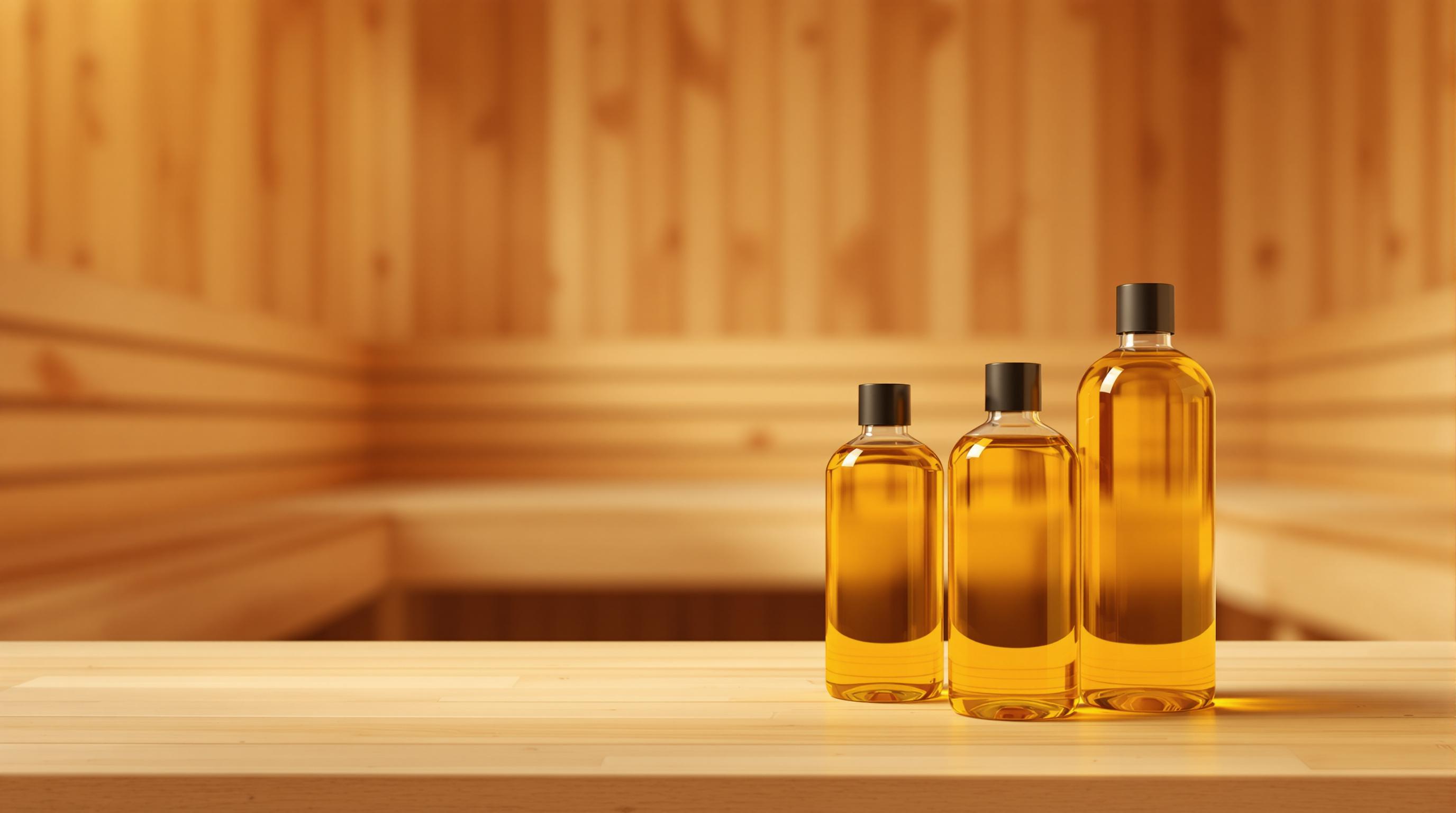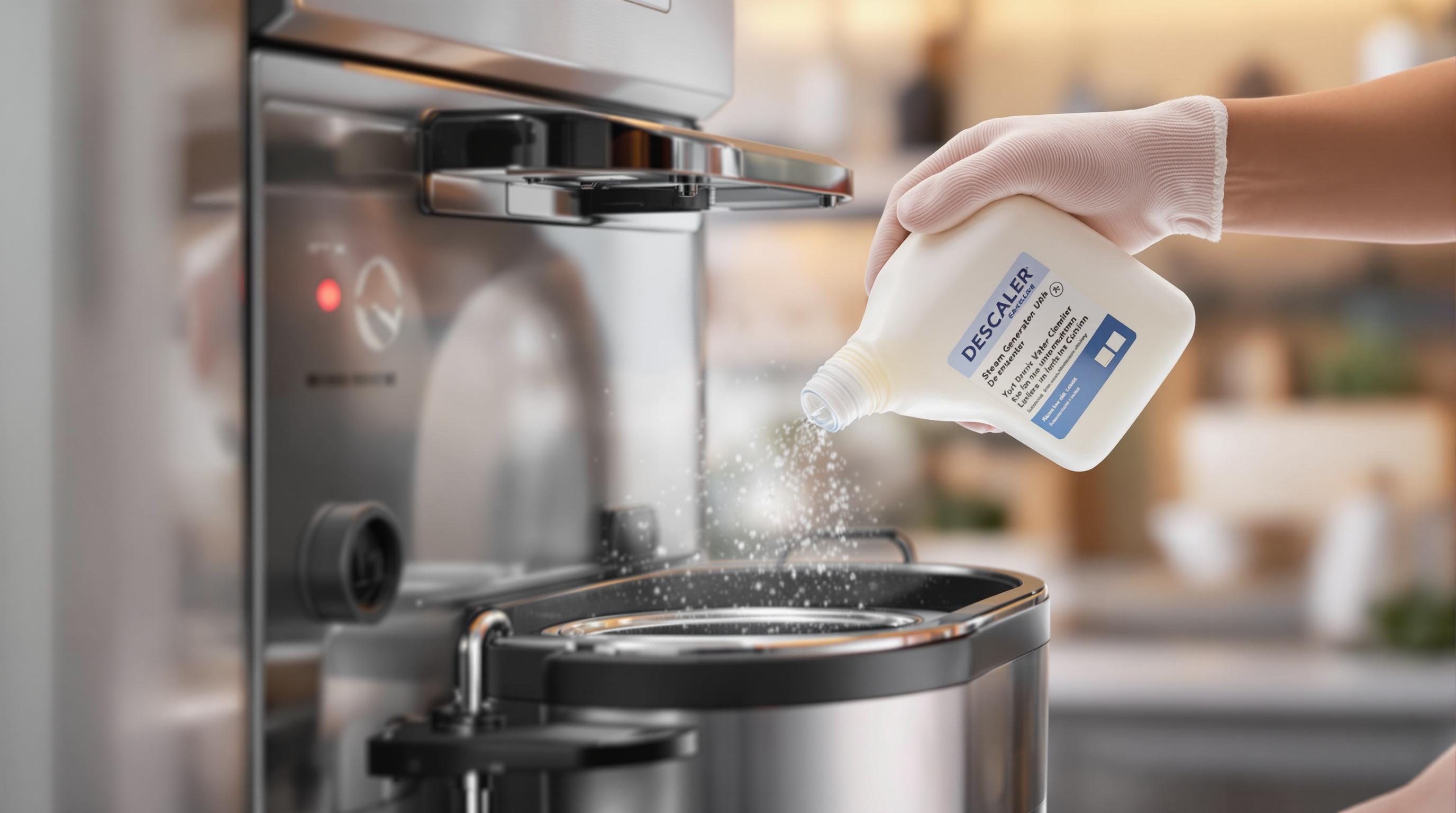Saunas can be relaxing, but they come with risks. Overheating in a sauna can lead to heat exhaustion or the more dangerous heatstroke. Here's what you need to know:
- Heat Exhaustion: Symptoms include heavy sweating, dizziness, and fatigue. It can be treated with rest, hydration, and cooling down.
- Heatstroke: A medical emergency where body temperature exceeds 104°F (40°C). Symptoms include confusion, hot skin, and a lack of sweating. Immediate medical attention is required.
Quick Comparison
| Aspect | Heat Exhaustion | Heatstroke |
|---|---|---|
| Body Temperature | Below 104°F (40°C) | 104°F (40°C) or higher |
| Mental State | Alert but fatigued | Confusion, possible unconsciousness |
| Skin Condition | Cool, pale, clammy | Hot, red, dry |
| Sweating | Heavy | Often stops |
| Urgency | Quick care needed | Medical emergency |
At-Risk Groups: Older adults, children, pregnant women, and those with medical conditions like heart disease or diabetes are more vulnerable. Always limit sauna sessions to 15-20 minutes, stay hydrated, and avoid alcohol to reduce risks.
Recognizing symptoms early and acting quickly can prevent complications. Stay safe and enjoy saunas responsibly.
Understanding Heatstroke and Heat Exhaustion
What Is Heatstroke?
Heatstroke is a serious condition that happens when your body temperature reaches 104°F (40°C) or higher [1]. In a sauna, this can occur when your body’s ability to regulate temperature is overwhelmed by the intense heat. Saunas can push your body’s cooling system to its limits, creating a dangerous situation.
What Is Heat Exhaustion?
Heat exhaustion is your body’s way of signaling that it’s struggling to stay cool [7]. This often happens due to dehydration, staying in high heat for too long, or not taking enough breaks during sauna sessions.
In saunas, heat exhaustion can result from:
- Excessive sweating that causes dehydration
- Prolonged exposure to high temperatures
- Skipping rest periods between sessions
How Heatstroke and Heat Exhaustion Differ
Here’s a comparison of the two conditions:
| Aspect | Heat Exhaustion | Heatstroke |
|---|---|---|
| Body Temperature | Below 104°F (40°C) | 104°F (40°C) or higher |
| Mental State | Alert but fatigued | Confusion, seizures, possible unconsciousness |
| Skin Condition | Cool, pale, clammy | Hot, red, dry |
| Sweating | Heavy sweating initially | Sweating often stops as it worsens |
| Treatment Urgency | Needs quick attention | Medical emergency - call for help |
| Recovery Time | 24-48 hours with proper care | May require hospitalization |
A study looking at sauna use at varying temperatures found that being exposed to 120°C caused noticeable changes, like increased heart rate and forehead temperature [8]. This highlights the importance of recognizing heat exhaustion early, as it can quickly escalate to heatstroke if ignored [5][9].
Understanding these differences is important, but knowing who’s most at risk can help prevent these issues in the first place.
Who Is at Risk When Using Saunas?
Groups More Susceptible to Heat-Related Issues
Certain people face a higher chance of experiencing heat-related problems while using saunas. Here's a breakdown of those groups and their specific concerns:
| Risk Group | Specific Concerns |
|---|---|
| Older Adults (65+) | Reduced ability to regulate body temperature and slower adjustment to heat |
| Heart Patients | Conditions like severe aortic valve stenosis, angina, or recent heart attacks |
| Pregnant Women | Risks from elevated body temperature and potential dehydration |
| Young Children (under 7) | Immature temperature regulation systems |
| People with Certain Conditions | Issues like seizure disorders, diabetes, or kidney disease may increase risks |
Factors That Heighten Risk
Several elements can make sauna use more dangerous, especially for those in the groups listed above:
- Temperature and Time Spent: Staying in a sauna for over 20 minutes or at very high temperatures can lead to dehydration. Warning signs include dark urine, dry mouth, and confusion [1].
- Health Conditions and Medications: Some health issues and medications can interfere with the body's natural cooling mechanisms. For example, diuretics, antihistamines, and beta-blockers may alter how your body handles heat [6]. Additionally, carrying extra weight can make it harder for the body to manage heat effectively.
- Behavioral Choices: Drinking alcohol before or during a sauna session can worsen dehydration, impair decision-making, and disrupt your body's ability to regulate heat [1][7].
A 2018 review also noted that individuals with pre-existing conditions are more likely to experience effects like low blood pressure, dizziness, and airway irritation [4].
Knowing who is at risk is just one part of the equation. Recognizing symptoms and being prepared to act is equally important.
Heat Stroke vs. Heat Exhaustion: What You Need to Know
sbb-itb-3953eb0
How to Spot and Handle Heatstroke and Heat Exhaustion
Recognizing the signs of heat-related conditions early can make a big difference, especially for those at higher risk. Here's how to identify and address these issues effectively.
Symptoms to Watch For
Heatstroke symptoms include a body temperature over 104°F, hot and dry skin, little to no sweating, a rapid heartbeat, shortness of breath, and confusion or disorientation. On the other hand, heat exhaustion typically shows up as heavy sweating, muscle cramps, dizziness, headaches, cool and clammy skin, and fatigue, though mental alertness is usually maintained [1][2].
Steps to Treat Heatstroke
Heatstroke is a medical emergency and requires immediate attention. Here's what to do:
- Call 911 right away.
- Move the person to a cooler area and remove excess clothing.
- Focus on rapid cooling methods like:
- Using cool water.
- Applying ice packs (wrapped in cloth) to the neck, armpits, and groin.
- Using a fan to help cool the body.
Steps to Treat Heat Exhaustion
Heat exhaustion is less severe but still requires prompt care. Follow these steps:
- Move the person to a cool, shaded space.
- Remove unnecessary clothing.
- Encourage hydration and apply cool, wet cloths to the body.
If symptoms don't improve within 15 minutes, seek medical help to prevent the condition from escalating to heatstroke [2][3].
Treatment and Response Differences
The main differences between heatstroke and heat exhaustion lie in the urgency and type of care needed. Here's a quick comparison:
| Aspect | Heatstroke | Heat Exhaustion |
|---|---|---|
| Urgency | Emergency - Call 911 | Can often be treated on-site |
| Treatment | Rapid cooling, medical care | Rest, hydration, cooling |
| Recovery Time | Days to weeks with medical care | 24-48 hours with proper care |
Knowing how to respond is essential, but prevention should always be the first priority.
Tips for Safe Sauna Use
Staying safe in a sauna means being mindful of your limits and understanding potential risks. Following the right practices can help you avoid issues like heat exhaustion or heatstroke.
Basic Sauna Safety Tips
Moderation and preparation are essential for safe sauna use. Here are some key guidelines to keep in mind:
| Safety Measure | Details | Reason |
|---|---|---|
| Session Management | Limit sessions to 15-20 minutes, with 10-15 minute cooling breaks | Prevents overheating and supports recovery |
| Hydration | Drink water regularly during your session | Helps maintain proper fluid levels |
| Temperature Control | Start with lower temperatures and increase gradually | Allows your body to adjust safely |
While these tips work for most people, some groups need to take extra precautions.
Extra Precautions for At-Risk Groups
Certain individuals should follow additional safety measures when using saunas:
Older Adults
- Check body temperature more often.
- Stick to lower temperature settings.
- Limit sessions to 10-15 minutes.
People with Medical Conditions
- Speak with a healthcare provider before using a sauna.
- Avoid saunas if you have severe aortic valve stenosis.
- Skip sessions if you’re experiencing an acute illness.
Children and Pregnant Women
- Keep sessions short and use lower temperatures.
- Supervise children under seven at all times.
- Consult a healthcare provider for specific recommendations.
Choosing the right type of sauna can also make a big difference in safety and comfort.
Choosing a Sauna That Fits Your Needs
The type of sauna you choose can affect your experience, especially if you're in a sensitive group. Different saunas vary in heat and humidity levels, which can influence safety:
Traditional Saunas
- Provide intense heat exposure.
- Best suited for experienced users.
- Offer gentler, more even heat.
- A great option for beginners or those with heat sensitivity.
For more information on selecting the ideal sauna for your needs, check out Find the Home Sauna of Your Dreams, which provides detailed insights into various sauna types and their safety features.
Conclusion: Enjoy Saunas Safely
Knowing the difference between heatstroke and heat exhaustion is key to using saunas without risking your health. Since each condition requires a specific response, prevention and awareness are essential to avoid heat-related problems.
Staying hydrated before, during, and after your sauna session is a must to reduce the risk of complications. Following these general guidelines can help keep your experience safe:
| Risk Level | Maximum Session Duration |
|---|---|
| Healthy Adults | 15-20 minutes |
| Older Adults | 5-10 minutes |
| At-Risk Groups | Consult healthcare provider |
Sauna heat can pose serious risks, particularly for individuals with cardiovascular issues [10]. If you fall into an at-risk category, make sure to check with your healthcare provider before using a sauna. Be mindful of warning signs like dizziness or a rapid heartbeat [5].
If you notice symptoms such as dizziness, an unusually fast heartbeat, or excessive sweating, step out of the sauna immediately and take time to cool down [5]. Staying alert to these signs can help you avoid more serious complications.
FAQs
Here are answers to some common questions about sauna safety and heat-related risks.
What are the symptoms of spending too much time in a sauna?
Staying in a sauna for too long can cause heat exhaustion. Symptoms include heavy sweating, muscle weakness, nausea, dizziness, and mental confusion. Your skin might feel cold and clammy as your body struggles to regulate temperature, and you could notice a rapid but weak pulse [1][7]. For a full list of warning signs, check the "Symptoms to Watch For" section above.
How should you respond to heat illness?
Start by moving the affected person to a cooler spot, raising their legs, loosening tight clothing, and offering water or electrolyte drinks (avoid caffeine). If symptoms are severe, begin cooling them immediately while waiting for medical help [5][6]. Tailor your response to the severity of the symptoms - refer to "How to Spot and Handle Heatstroke and Heat Exhaustion" for detailed instructions.
What steps should be taken in a heat illness emergency?
Actions depend on the severity of the symptoms. If someone shows signs of heatstroke - like confusion, slurred speech, or unconsciousness - call 911 right away and start cooling them down [7]. For heat exhaustion, follow the first aid steps mentioned earlier. If the condition doesn’t improve with basic care, seek medical attention to avoid escalation to heatstroke [6].


